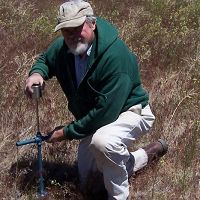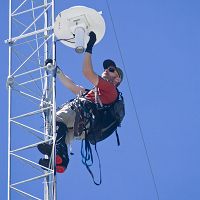Johnson et al., 2012
Three dimensional view of nutrient hotspots in a Sierra Nevada forest soil
Johnson, D.W., Meadows, M.W., Woodward, C. (2012)
Fall Meeting, American Geophysical Union, December 2012. Abstract B43F-0468.
-
Sierra, INVESTIGATOR
-
Sierra, STAFF
-
Sierra, GRAD STUDENT
Abstract
In a previous paper, we explored the variability in O horizons and surface soils in two 6 x 6 m plots in the King’s River Experimental Watershed (KREW) in the western Sierra Nevada Mountains of California, one of the Critical Zone Observatory sites. Using both traditional soil coring and resin-based methods, we found that hotspots were common for all measured nutrients, especially in water-extractable fractions. We hypothesized that some of these hotspots were due to preferential infiltration of O horizon interflow. In this study, we expand the sampling space vertically by installing resin capsules at the O horizon/mineral soil interface (as in the past), and at 20, 40, and 60 cm in the soil in 16 gridpoints within a 6 x 6 m grid using the WECSA® Access system. Resins were collected after the first precipitation event in the autumn of 2011 and after snowmelt in the spring of 2012, thus providing a three-dimensional view of soil nutrient availability at two different times in exactly the same locations. The data showed considerable spatial variability at all depths, but also suggested vertical connections of hotspots for certain nutrients in that high values were co-located in the same vertical location at different depths. The data also showed clustering of high nutrient values in the deeper depths after the first precipitation event, suggesting the influence of preferential flow with the first fall wetting front.
Citation
Johnson, D.W., Meadows, M.W., Woodward, C. (2012): Three dimensional view of nutrient hotspots in a Sierra Nevada forest soil. Fall Meeting, American Geophysical Union, December 2012. Abstract B43F-0468..
Explore Further



